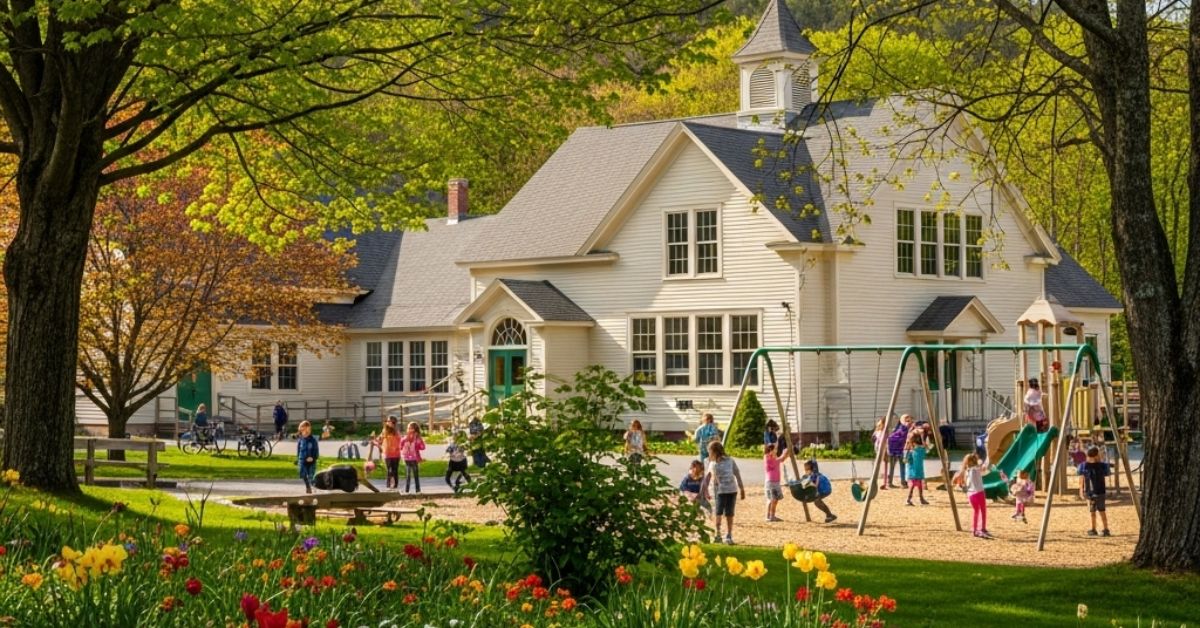In Vermont, schools aren’t just places for learning math or reading—they are the hearts of their small towns. These schools help bring people together, support local life, and teach students how to be active members of their communities.
From helping neighbors to joining local events, Vermont schools show us how education can grow stronger towns, not just smarter students.
Schools That Feel Like Family
Many schools in Vermont are small, with fewer than 100 students. This means that students, teachers, and parents know each other really well. Kids often grow up with the same classmates from kindergarten to middle school.
This close bond helps everyone feel like they belong. Teachers become like second parents. Students look out for one another. It feels more like a big family than just a school.
Learning That Helps the Whole Town
Instead of only learning from books, Vermont students often help out in their communities. They might clean parks, plant trees, or work with local farms. In some towns, students help run food drives or even create projects to improve things in their neighborhoods.
This kind of hands-on learning teaches kids responsibility and care. It also helps the town become a better place for everyone.
Key Ways Vermont Schools Help Communities
| School Feature | Community Impact |
|---|---|
| Small class sizes | Students get more attention and care |
| Community projects | Help towns stay clean, healthy, and united |
| Local learning (forests, farms) | Builds real-world skills and local pride |
| Parent & neighbor involvement | Strengthens town connections |
| Focus on relationships | Creates a safe, supportive learning environment |
Local Knowledge Is a Superpower
Vermont schools use what’s around them as part of the lesson. If there’s a forest nearby, it becomes a science classroom. If there’s a farm down the road, it’s perfect for learning about food, money, and business.
This shows students that learning isn’t just something you do at a desk. It’s something you do by being curious and using what’s around you.
Parents and Neighbors Are Part of the School
In small Vermont towns, parents often volunteer in schools. They help in classrooms, drive students to events, and even cook meals. Local business owners might come in to teach students about what they do.
This makes the line between “school” and “community” disappear. Everyone works together to help kids grow—and when kids grow strong, so does the town.
Challenges of Staying Small and Strong
Of course, small schools face real problems. Some don’t have enough money or students. Merging schools (a result of Vermont’s Act 46) has helped in some cases, but others fear it takes away the local charm.
Still, many Vermont towns fight to keep their schools open, because they know that when a school closes, the town loses more than just a classroom—it loses part of its heart.
Conclusion
Vermont schools remind us that education is about more than just test scores. It’s about helping people grow into kind, thoughtful, and helpful members of their community. When schools work closely with families, neighbors, and local places, everyone wins.
These small Vermont schools are showing the rest of the country that strong schools can build strong towns—and that’s a lesson worth learning everywhere.








